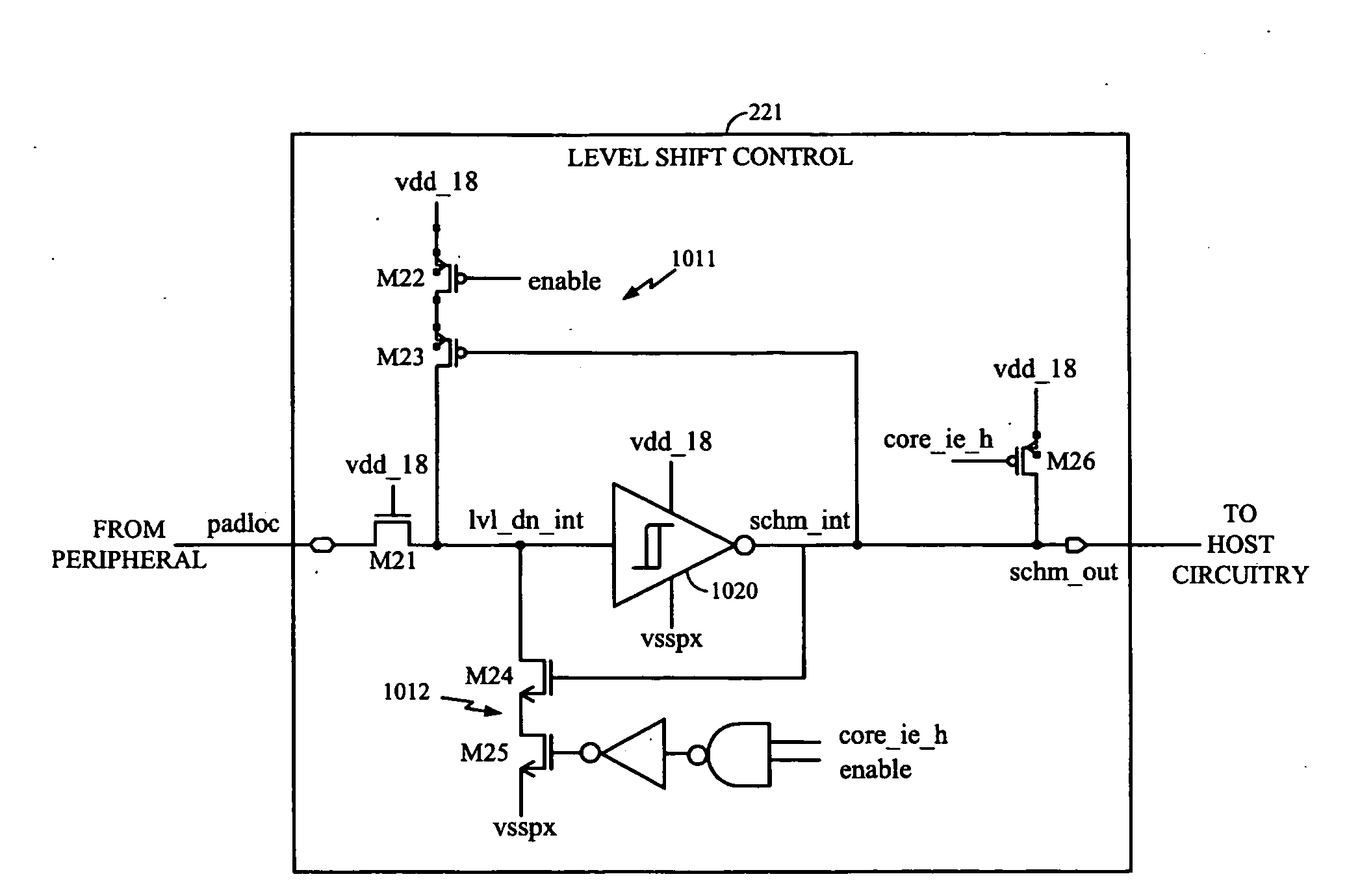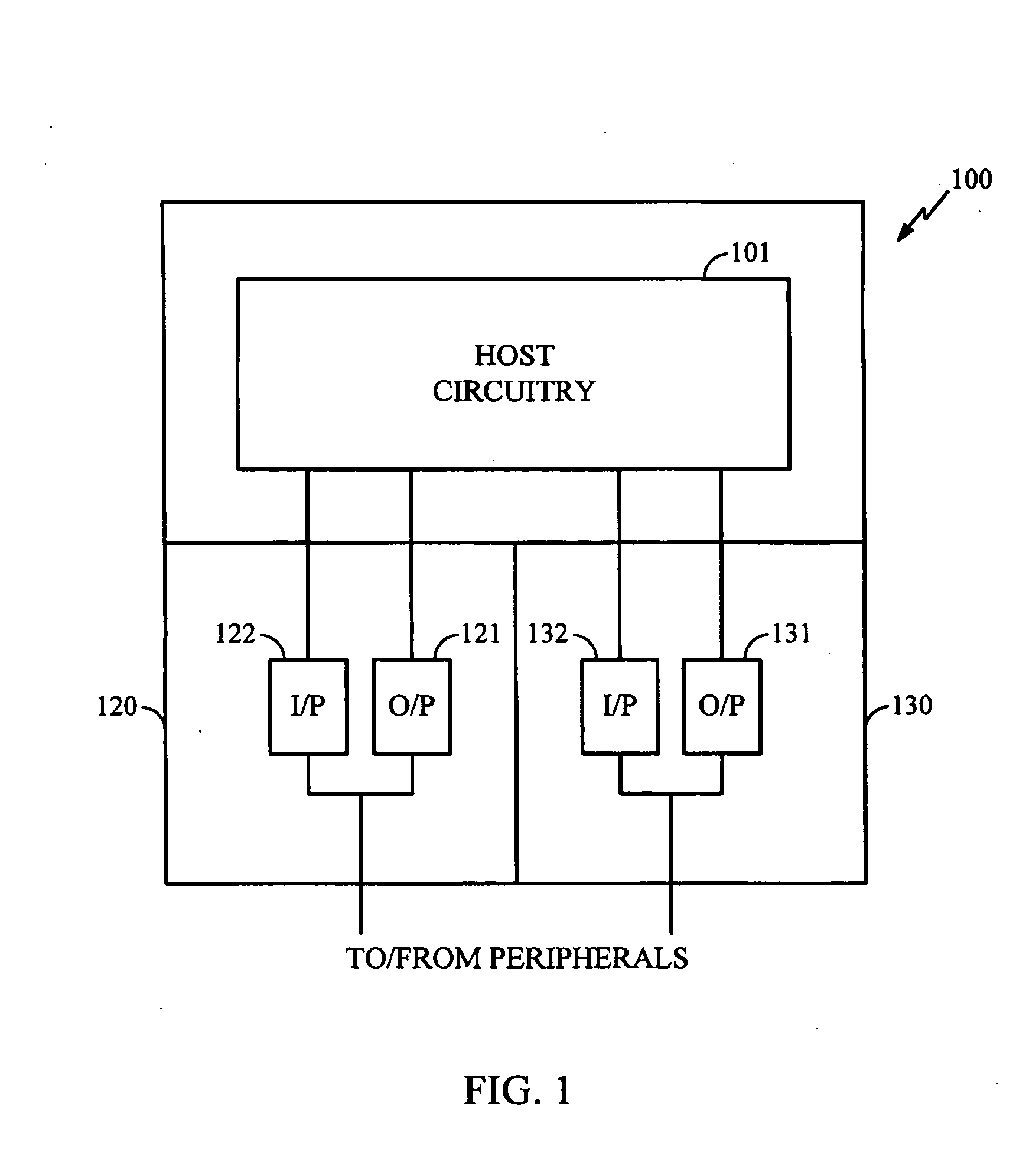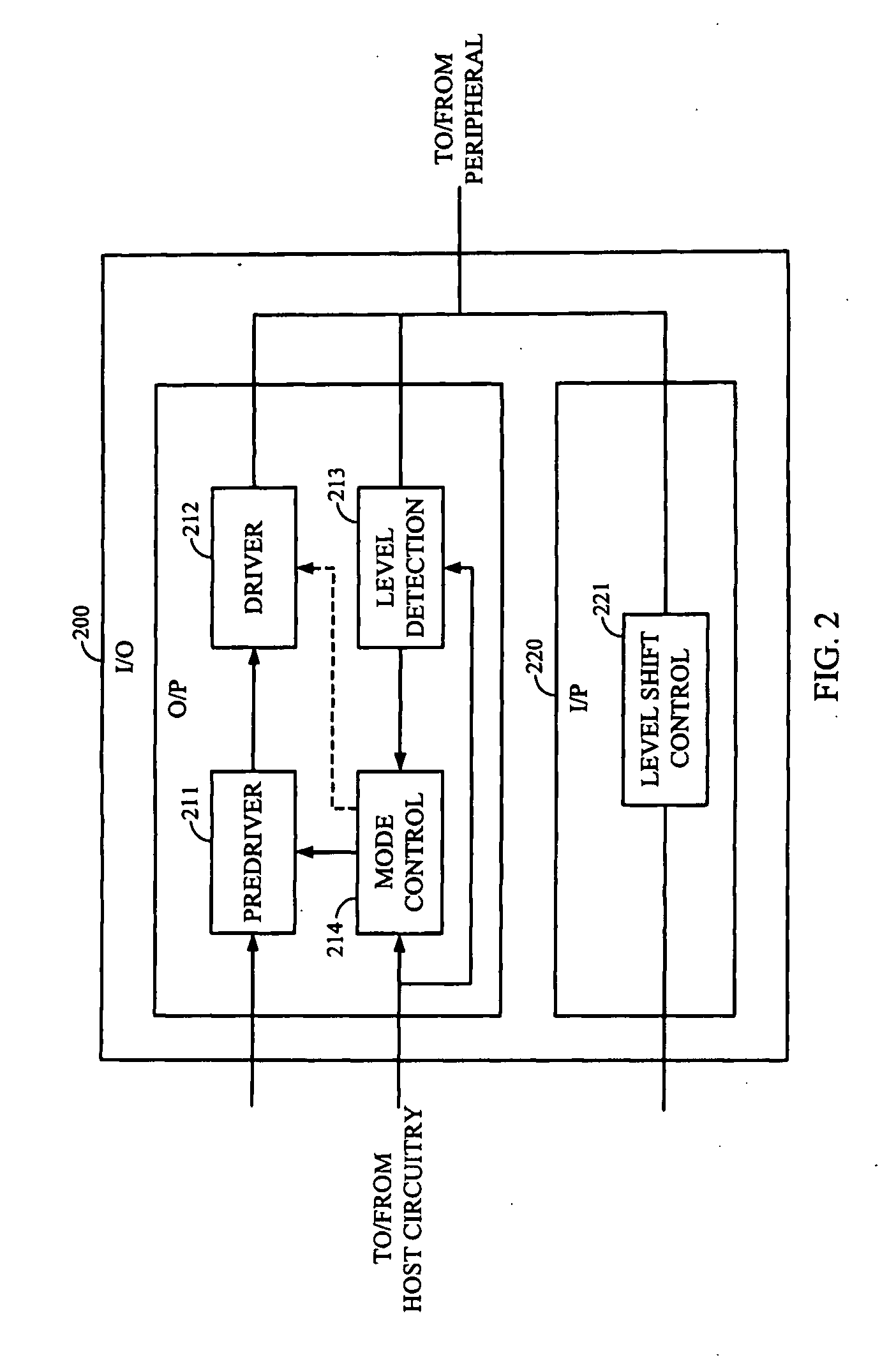High signal level compliant input/output circuits
- Summary
- Abstract
- Description
- Claims
- Application Information
AI Technical Summary
Benefits of technology
Problems solved by technology
Method used
Image
Examples
Embodiment Construction
[0025]FIG. 2 shows a high level block diagram of an embodiment of high signal level compliant input / output circuitry according to the concepts herein. Input / output circuit 200 of FIG. 2 is adapted to provide interfacing between host circuitry (not shown) of a host electronic device, such as a personal computer system, personal digital assistant (PDA), cellular telephone, pager, digital sound recorder, digital camera, digital video camera, personal entertainment player, gaming device, etc., and a peripheral, such as a memory device, a display, a printer, an electronic pointer, a transducer, etc. In particular, input / output circuit 200 is adapted to accommodate peripheral interface signals of both high level (e.g., 2.6V and / or 3.0V) and of low level (e.g., 1.8V). In accommodating high signal levels, input / output circuit 200 utilizes electronic components designed for use with respect to the low signal levels. Embodiments thereby provide efficiencies with respect to size and power cons...
PUM
 Login to View More
Login to View More Abstract
Description
Claims
Application Information
 Login to View More
Login to View More - R&D
- Intellectual Property
- Life Sciences
- Materials
- Tech Scout
- Unparalleled Data Quality
- Higher Quality Content
- 60% Fewer Hallucinations
Browse by: Latest US Patents, China's latest patents, Technical Efficacy Thesaurus, Application Domain, Technology Topic, Popular Technical Reports.
© 2025 PatSnap. All rights reserved.Legal|Privacy policy|Modern Slavery Act Transparency Statement|Sitemap|About US| Contact US: help@patsnap.com



